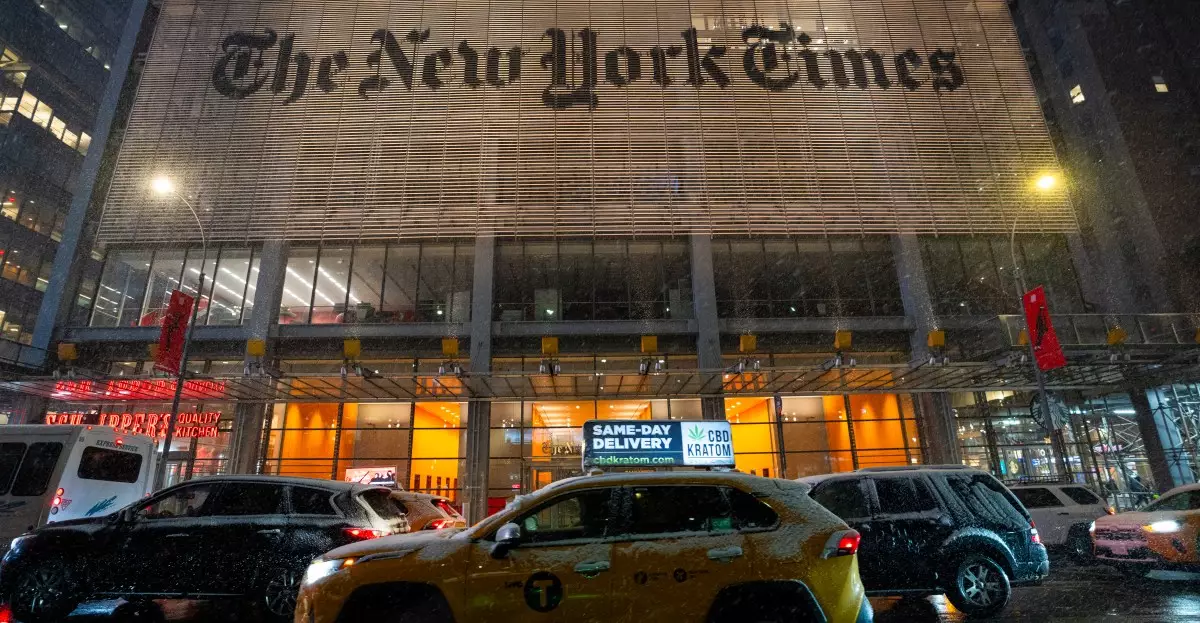In a transformative move within the journalism landscape, The New York Times is reportedly championing the integration of artificial intelligence (AI) into its newsroom operations. The publication’s recent initiatives highlight a potential shift in how news content is produced, edited, and disseminated. Encouraging staff to utilize AI tools for suggesting edits, crafting headlines, and generating interview questions signifies the Times’ embrace of new technologies, aiming to streamline workflow and enhance productivity.
As journalists face growing demands for rapid responses and timely reporting, AI offers a solution to manage these pressures. The internal communication from The New York Times emphasized a balanced approach: utilizing AI for supportive tasks while ensuring that human journalists remain the core of all content creation and editorial decisions. The echoes of this commitment suggest a recognition of the indispensable role that human insight and journalistic integrity play, even as technology evolves.
As part of the AI integration process, The New York Times has announced comprehensive training for both editorial and product teams, enabling staff to harness AI tools effectively. One central tool, dubbed Echo, aims to assist journalists in summarizing articles and briefing information. Further, staff have been provided with detailed editorial guidelines outlining the appropriate use of AI technologies. These guidelines echo the sentiment that while AI can augment the creative process, the ultimate accountability for journalistic content remains with the reporters and editors.
The guidelines also establish boundaries for AI usage, prohibiting it from drafting or making significant alterations to articles. This reflects a cautious yet progressive approach to AI; while the technology is embraced, there is a clear understanding of the ethical implications and the necessity of maintaining the integrity of journalism.
Despite the innovative use of AI, the Times has reassured its audience that the essence of its journalism remains unchanged. The commitment to human oversight and professional scrutiny reflects a broader industry understanding that AI, while beneficial, cannot replicate the nuanced judgment and critical thinking that skilled journalists provide. The memo released by the Times underscores that AI’s role should be complementary—providing assistance rather than replacing the valuable contributions of experienced writers and editors.
Moreover, the principles introduced by the Times reiterate a commitment to fact-checking and verification, fundamentals that form the backbone of credible journalism. The integration of AI must, therefore, be approached with caution, ensuring all generated content is grounded in verified information.
The excitement surrounding the adoption of AI is juxtaposed with the legal complexities it brings. The New York Times is currently engaged in a legal dispute with OpenAI and Microsoft over intellectual property issues, specifically concerning the use of the Times’ content in training AI models like ChatGPT. This situation highlights the ongoing tensions that media organizations face as they navigate the ethics of content usage and the implications of AI on traditional journalism practices.
Nonetheless, the Times’ initiative aligns with a broader trend in the media industry, where organizations are experimenting with AI technologies to various extents. This ranges from basic editing tools to the automated generation of full articles. As competition increases, the pressure to innovate while preserving journalistic standards will intensify, making it crucial for media institutions to strike the right balance.
The journey of integrating AI into journalism, particularly at The New York Times, raises essential questions about the future of news media. Will AI serve as a mere assistant, or could it lead to significant changes in how news is reported and consumed? As staff adapt to these new technologies, the challenge will be to maintain a human-centric approach, ensuring that the public continues to receive high-quality, trustworthy journalism.
The move toward AI incorporation at The New York Times symbolizes a noteworthy evolution in journalism. While harnessing the benefits of technology, the commitment to human oversight and ethical standards remains paramount, fostering an environment where journalism can adapt and grow in an ever-changing digital landscape.


Leave a Reply